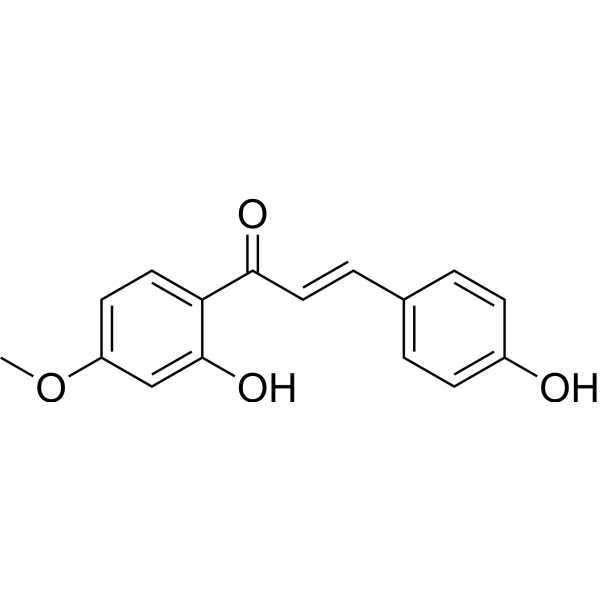
4,2-Dihydroxy-4-methoxychalcone
CAS No. 63529-06-6
4,2-Dihydroxy-4-methoxychalcone( —— )
Catalog No. M31592 CAS No. 63529-06-6
4,2'-Dihydroxy-4'-methoxychalcone shows allergy-preventive effects.
Purity : >98% (HPLC)
 COA
COA
 Datasheet
Datasheet
 HNMR
HNMR
 HPLC
HPLC
 MSDS
MSDS
 Handing Instructions
Handing Instructions
| Size | Price / USD | Stock | Quantity |
| 5MG | 603 | In Stock |


|
| 50MG | Get Quote | In Stock |


|
| 100MG | Get Quote | In Stock |


|
Biological Information
-
Product Name4,2-Dihydroxy-4-methoxychalcone
-
NoteResearch use only, not for human use.
-
Brief Description4,2'-Dihydroxy-4'-methoxychalcone shows allergy-preventive effects.
-
Description4,2'-Dihydroxy-4'-methoxychalcone shows allergy-preventive effects.
-
In Vitro——
-
In Vivo——
-
Synonyms——
-
PathwayOthers
-
TargetOther Targets
-
Recptor——
-
Research Area——
-
Indication——
Chemical Information
-
CAS Number63529-06-6
-
Formula Weight270.28
-
Molecular FormulaC16H14O4
-
Purity>98% (HPLC)
-
Solubility——
-
SMILES——
-
Chemical Name——
Shipping & Storage Information
-
Storage(-20℃)
-
ShippingWith Ice Pack
-
Stability≥ 2 years
Reference
molnova catalog



related products
-
Rabies Virus Glycopr...
Rabies Virus Glycoprotein is a 29 amino acid fragment generated from rabies virus glycoprotein (RVG). This peptide specifically binds to the acetylcholine receptor expressed by neuronal cells.
-
SARS-CoV-2 Mpro-IN-9
SARS-CoV-2 Mpro-IN-9 (compound c7), a nonpeptidic, noncovalent inhibitor of SARS-CoV-2 main protease (Mpro), exhibits potent inhibitory action (IC50 = 0.085 μM) and improved physicochemical and drug metabolism and pharmacokinetics (DMPK) properties.
-
Influenza HA (110 - ...
Influenza HA (110 - 120)



 Cart
Cart
 sales@molnova.com
sales@molnova.com


